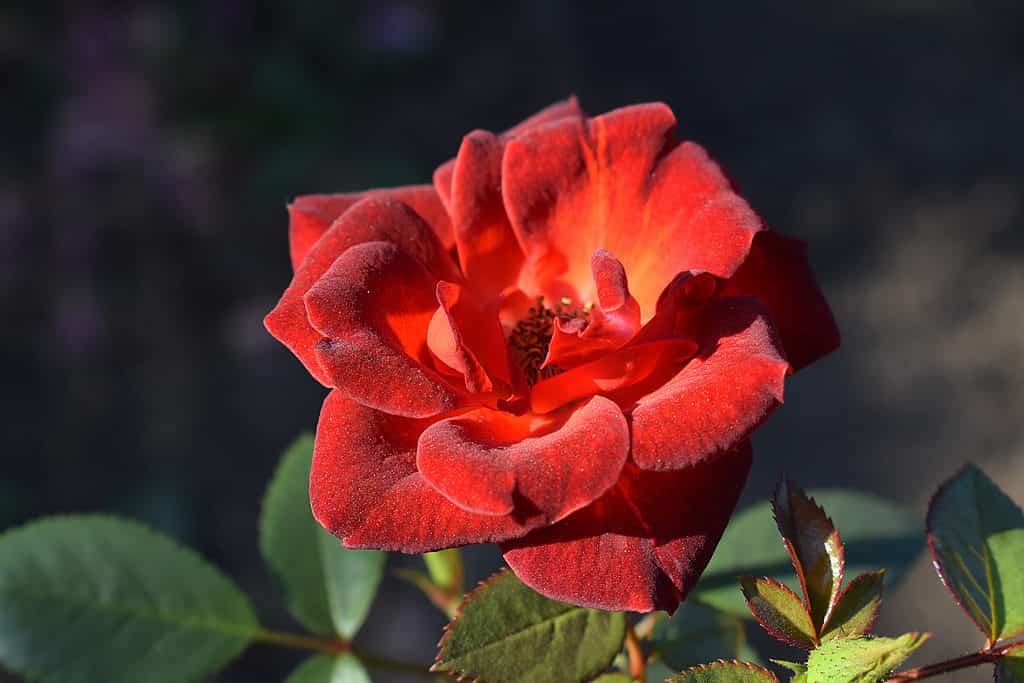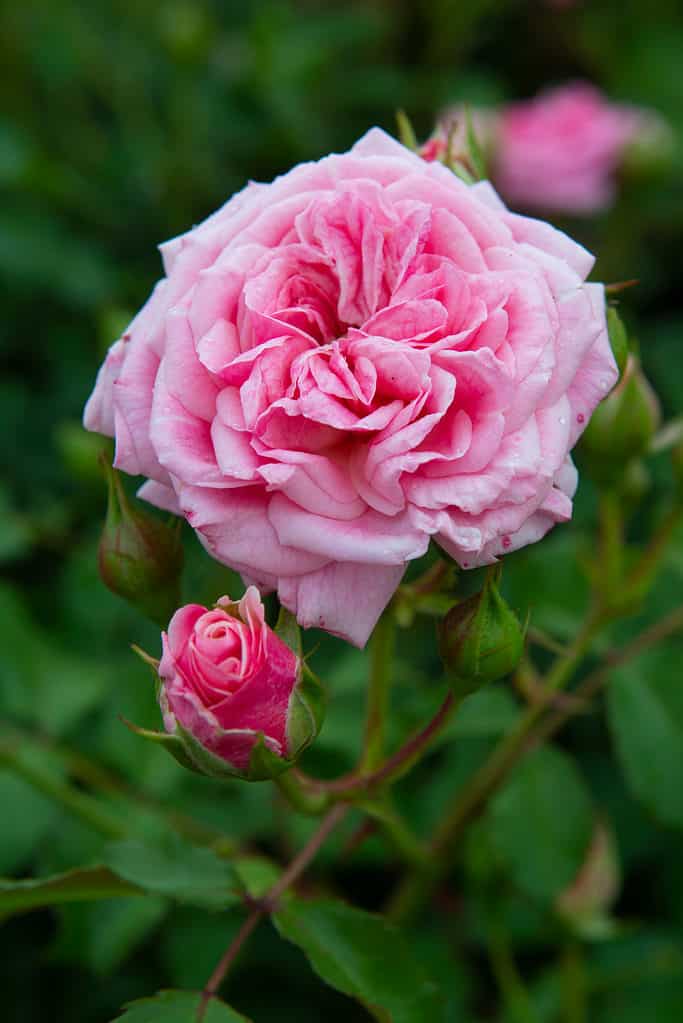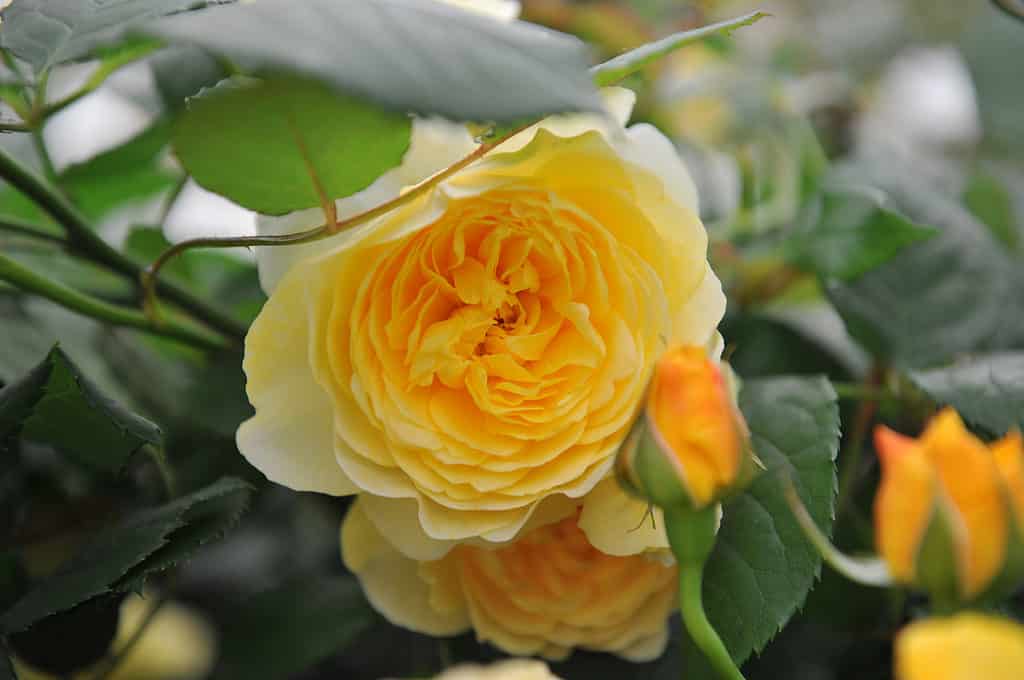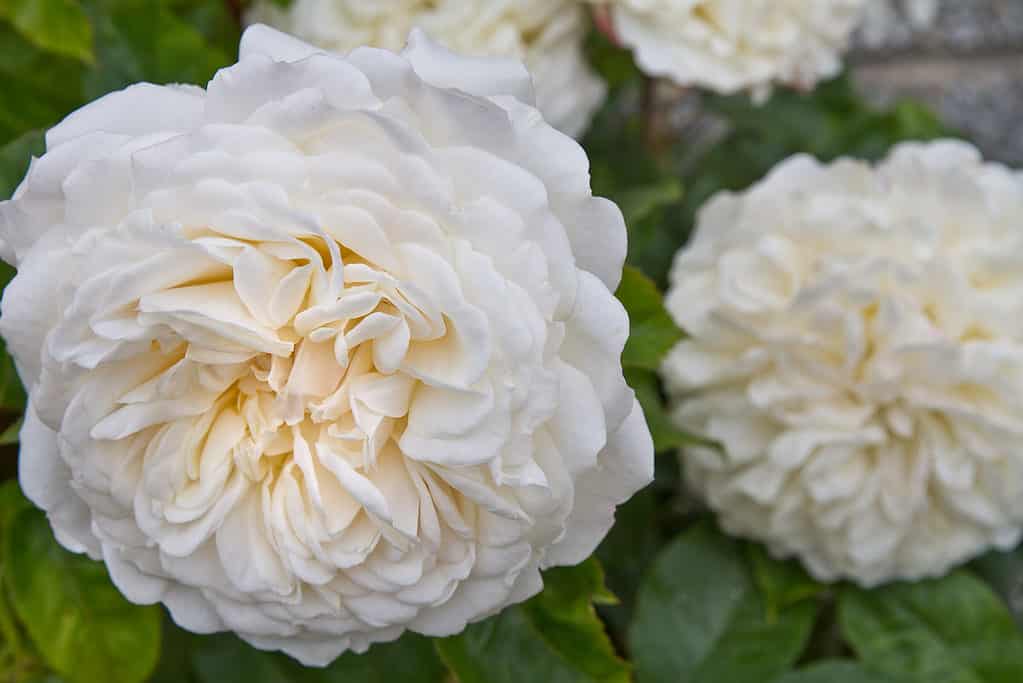Situated in the Northeast and Mid-Atlantic region of the United States, New Jersey is the fifth smallest state in terms of land area, but ranks 11th in population and first in population density. All but one of the state’s counties (Warren County) are located in the combined statistical areas of either Philadelphia or New York City.
With such a large population in relatively a small area, space can be at a premium. For gardeners, it often means they have smaller gardens and flowerbeds to cultivate, so plants with a smaller footprint are preferred.
The plant hardiness zones in New Jersey are fairly uniform, with the entire state lying in Zones 6-7. That makes New Jersey an absolute sweet spot for almost every rose variety on the market today, including those rose plants that showcase eye-catching blooms but take up a relatively small amount of space. These 6 are our recommendations:

Let’s talk further about these six rose varieties that can turn the Garden State into the Rose Garden State!
Types
| Needed Information | Rose Facts |
|---|---|
| Botanical Name | Rosa spp. |
| Common Name | Rose |
| Plant Type | Perennial |
| Hardiness Zones | Zones 5-8 |
| Sunlight | Full |
| Bloom Seasons | Spring, Summer, Fall |
| Toxicity | Non-Toxic |
Here are some fantastic roses for those smaller New Jersey gardens, along with a few for gardeners who may have a bit more real estate to work with. All these roses are perfectly suited for Zones 6-7, meaning any gardener in the state can grow these beauties.
Smaller Plants
Coffee Bean Miniature Rose (Rosa ‘WEKdoudou’)

The uniquely colored Coffee Bean rose is perfect for compact spaces.
©Marina Rose/Shutterstock.com
This little rose has a unique smoky orange/red/chocolate hue, which is a lovely contrast against the glossy deep green leaves. These miniature rose blooms are perfectly formed and continue to produce throughout the growing season. You’ll also love the light, floral fragrance these blooms provide.
This plant has a compact form and maxes out at 12-18 inches tall, with an equal spread at maturity. It is ideal for the patio or a container garden. It will also thrive with just a tiny bit of flowerbed or garden space. For New Jerseyans who live in highly populated areas where space is at a premium, the Coffee Bean Miniature may be the exact rose you’ve been searching for.
Sweet Drift Rose (Rosa ‘Sweet Drift’)

The Sweet Drift rose blooms with pastel-pink flowers for the entire growing season.
©InfoFlowersPlants/Shutterstock.com
Sweet Drift roses feature fluffy, vibrant double flowers that are packed with up to 35 petals. The flowers form in clusters, and the lovely pastel-pink hue makes for a romantic, cottage garden look. The Sweet Drift’s flowers bloom from spring until the first frost of fall, giving your garden amazing color for the entire growing season. You’re not the only one who will love these blooms. Pollinators such as bees and butterflies will, as well.
The foliage is glossy green and has exceptional resistance to black spot disease, powdery mildew, and other common rose diseases.
It is a wonderful plant for tight spaces, growing to a maximum height of two feet with a three-foot spread at maturity.
The Fairy Rose (Rosa ‘The Fairy’)

The Fairy rose features double pink blooms and remains compact.
©Fabrizio Guarisco/Shutterstock.com
This little rose is just as magical and whimsical as its name suggests. It is a compact shrub that grows to a height of 2-4 feet at maturity, with a similar spread. With some minor pruning, it can be contained in even smaller spaces.
The Fairy is a polyantha rose. Like most polyanthas, it features compact blossoms that bloom from late spring until fall. It is a tough plant with superb disease resistance.
The flowers are fully double, pale pink rosette blossoms that are packed with up to 25 petals. They grow in cascading clusters and feature a mild apple fragrance
Larger Plants
For New Jersey gardeners who have a bit more space they hope to fill with roses, here are some great options.
The Poet’s Wife Rose (Rosa ‘The Poet’s Wife’)

The Poet’s Wife rose is not only lemony-yellow but also features a strong lemony fragrance.
©Sergey V Kalyakin/Shutterstock.com
The yellow blooms on this David Austin rose are simply stunning. The cupped blooms have a neat outer ring of petals surrounding an informal group of petals, for a total of 75-80 petals. You are sure to love the fragrance of these blooms. It is a sweet lemony fragrance that actually gets stronger over time. You really will want to “stop and smell the roses” when this flower is growing in your garden!
This medium-sized shrub rose is bushy and nicely rounded with arching branches and fairly shiny foliage. It grows to about four feet in height and width at maturity.
The plant is prone to powdery mildew, but with close monitoring and good cultural practices, it can bring a lemony-yellow beauty to your landscape for a long time.
Tranquillity Rose (Rose ‘Tranquillity’)

David Austin’s Tranquillity rose features perfect rosette blooms of lovely white.
©CLICKMANIS/Shutterstock.com
Another rose from English rosarian David Austin, the Tranquillity rose is a lovely, pure white flower that is altogether exquisite. And yes, since the flower is of English origin, Tranquillity is spelled with two L’s, which is the proper spelling in British English.
The Tranquillity rose features rounded showy 2-3 inch flowers that form perfect rosettes of 110 petals. Budding with a light yellow tinge, the flowers open to pure white. The blooms feature a light apple fragrance. This nearly thornless rose is wonderful for cut arrangements. The pure white blooms are especially lovely for weddings and other events.
Introduced in 2012, the Tranquillity rose is a medium shrub that maxes out at four feet high and wide. It’s not super compact, but it also doesn’t grow to huge proportions. It would be a great fit for a lot of New Jersey rose gardens.
Knock Out Roses (Rosa ‘Radrazz’)

Knock Out roses are low-maintenance flowers that could be perfect for busy New Jersey gardeners.
©Molly Shannon/Shutterstock.com
You just can’t go wrong with the classics! The Knock Out rose is among the most maintenance-free roses available. It is a clean rose, which means no deadheading is needed. In fact, very little pruning is needed at all.
Knock Outs are tough roses that are resistant to both pests and diseases. The blooms do not fade in the summer heat and remain strong and showy from spring to fall.
While the iconic color for Knock Outs may always be red, these plants are also available in pink, blush pink, peach, white, and yellow.
Planting Tips
Whether you have a lot or a little space, any amount of New Jersey real estate could be prime rose-growing territory. Here are some tips to make your Garden State rose garden come alive!
When To Plant
New Jersey’s rose-friendly growing zones mean that roses can be planted throughout much of the year. You can plant in spring (after the last expected frost), summer, or fall with great success.
Where to plant
Roses need lots of sun, so choose a spot that receives at least six hours of sunlight per day. The spot also needs to have good drainage. While roses do need consistent moisture, standing water can lead to problems, including disease and even death of the plant.
For optimum results, prepare the soil about a month before you intend to plant your roses. Work a generous amount of organic material into the soil. Great options include dehydrated manure, leaf mold, peat moss, and compost.

Mixing organic matter into the soil will help your roses thrive.
©Singkham/Shutterstock.com
When you’re ready to plant, loosen a two-foot area of soil and mix in more organic matter. Dig a hole that is large enough for the root ball and add some bone meal to the hole. This will give your plant a slow release of nutrients. Place the root ball in the hole, then cover it with soil and tamp it down. Water the plant generously.
Growing Season
While you certainly don’t want to waterlog your roses, it’s very easy to under-water them. Roses need to be watered every 2-3 days, making adjustments with wet or dry weather conditions. It generally takes more water than most gardeners may think during each watering session. Provide enough water to saturate the soil down to 16 inches deep. Continue this practice until the plant goes dormant for the winter.
It also helps to feed your roses a couple of times a month. Organic fertilizer that is specially formulated for roses is the preferred option.
Toxicity
Roses are non-toxic. In fact, they are edible. There are myriads of food and drink recipes that use all parts of the plant, including buds, petals, leaves, and hips.
If you want to try your hand at some “rosy recipes,” make sure that the plant has never been treated with chemicals like synthetic pesticides or fertilizers. If chemicals have been used on the plant, it is no longer safe to consume.
Summary of 6 Roses That Flourish in New Jersey:
| Name of Rose | Color |
|---|---|
| Coffee Bean Miniature | Orange/red/chocolate |
| Sweet Drift | Pink |
| The Fairy | Pink |
| Poet’s Wife | Lemony yellow |
| Tranquillity | White |
| Knock Out | Typically red, but also pink, blush pink, peach, white, and yellow. |
The photo featured at the top of this post is © Marina Rose/Shutterstock.com
Thank you for reading! Have some feedback for us? Contact the AZ Animals editorial team.






